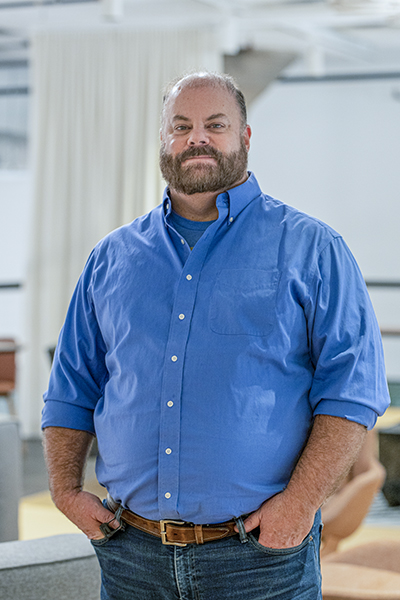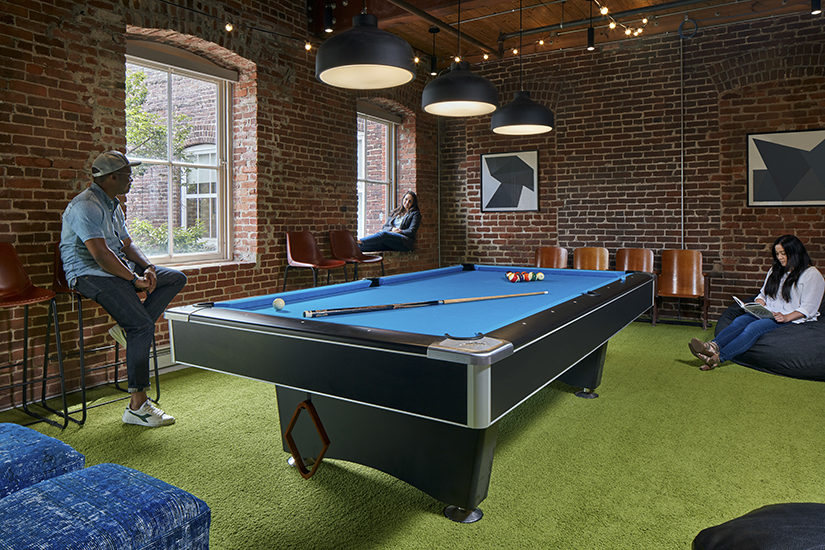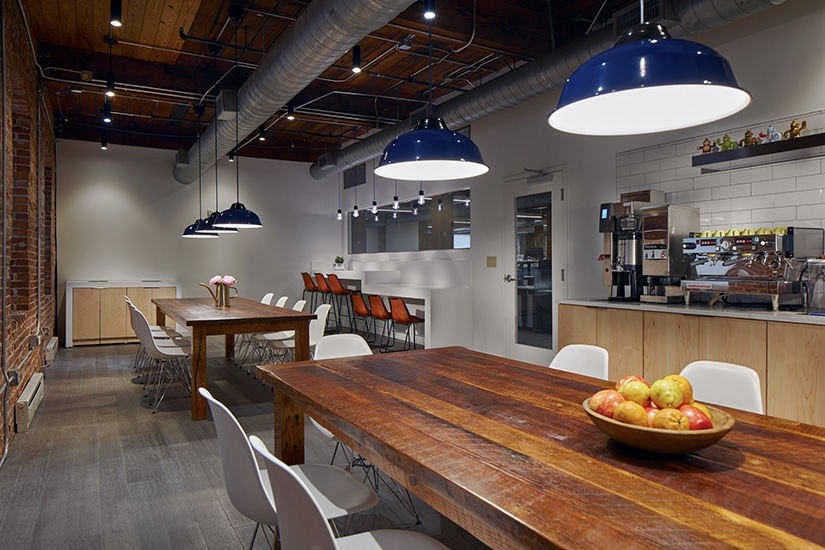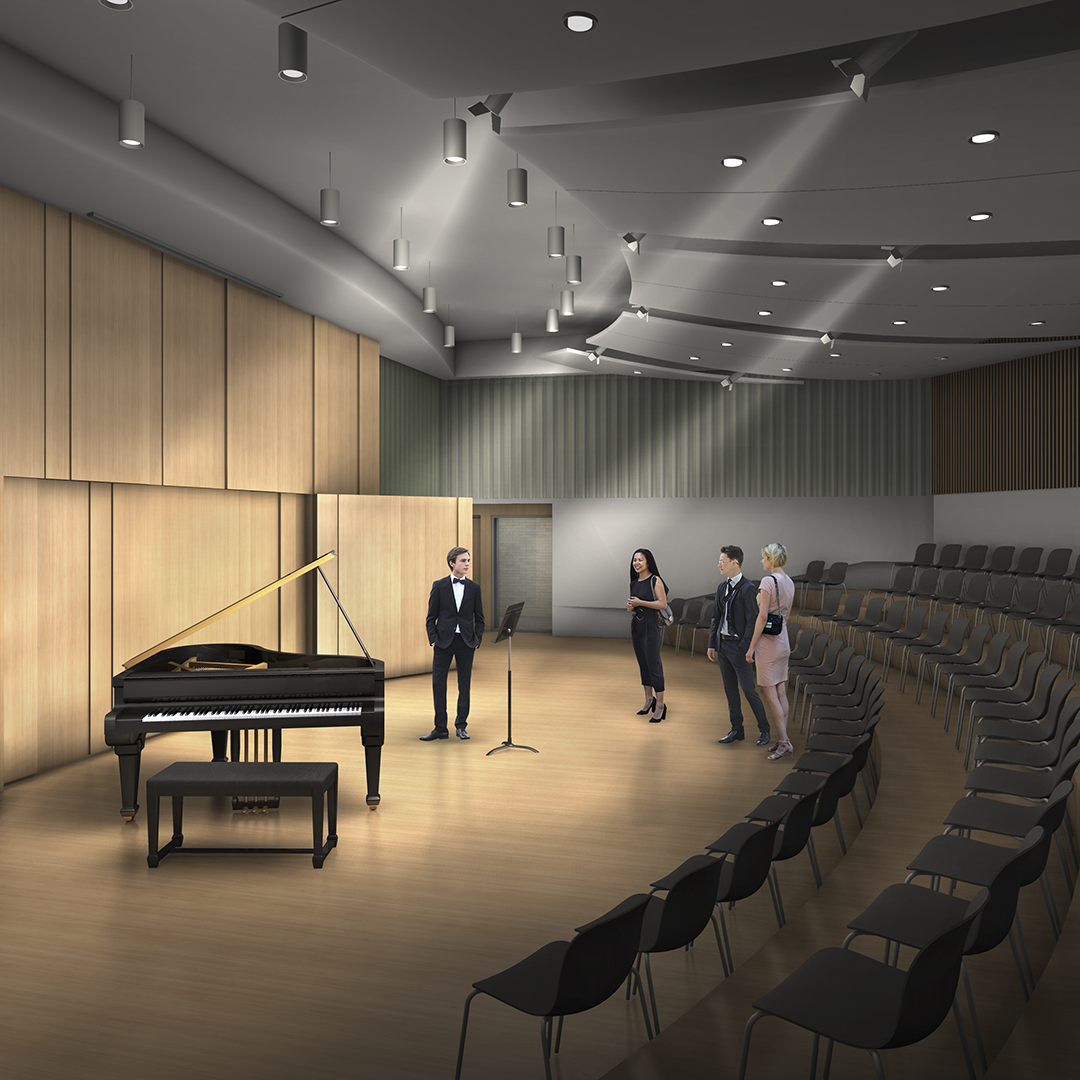|
Getting your Trinity Audio player ready...
|
Head up to the newly opened ninth floor in Atlanta’s Ponce City Market building and you will find 70 Mailchimp employees working in an office where every detail—from collaborative space balance to door handles—is considered. Bill McClain, director of real estate and facilities, acknowledges, “We think hard about how to have a positive environment.”

Less than a year before the ribbon cutting on this office, a different tenant still held occupancy and the space itself was unfinished. Working at a breakneck speed, McClain orchestrated sublease negotiations, architectural design meetings, and construction in just a few months. The move itself was executed in less than four hours on a single Friday night, and involved schlepping dozens of standing desks and ergonomic chairs; arranging smart boards around a precise number of low-voltage sockets necessary for Mailchimp’s video conferencing software; and collecting, labeling, and delivering over 100 moving crates of employee personal items to each desk.
The following Monday saw members of the legal and finance teams sitting and standing, alone and in groups, working hard, as though that massive haul was already a distant memory.
The ninth floor, a recent win, is certainly not McClain’s first. In May of 2016 he joined a workforce of 460 that has since swelled to 1,100. To scale, McClain maintains communication to constantly prepare people for what is coming down the pipelines. As the company grows, McClain keeps the needs of each employee in mind, ensuring access to nursing, huddle, quiet, and team collaboration spaces throughout offices.

McClain engages digital tools to develop new solutions. He overhauled a loosely kept, analog system into a real-time employee-facing visual directory, critical in the expanding scope of staff and facilities. However, at Mailchimp he is “just a regular real estate person” surrounded by highly technical people. His challenge, then, is to complement that tech with the physical space around it. He keeps the question, “How do we translate what you are doing into the physical world?” at the front of his work.
To achieve this, he partners closely with Mailchimp cofounder Dan Kurzius to direct real estate, planning, and office design. This includes identifying space for expansion and implementation of layout they are iterating to perfection. Recreational amenities, like ping-pong and pool tables, prove to be just as crucial as any other aspect. “There is a benefit to providing people some kind of releases, an opportunity to interact,” McClain explains. Especially for employees who spend the majority of their time working alone on a screen, game spaces increase ability to collaborate or ask for support.
In an era of open offices, Mailchimp adheres to a culture where everyone has access to a desk if they want. “We’ve studied what happens in open offices and tweaked it a bit,” McClain says. For example, they have arranged groupings of desks with a smaller amount of space between them, making it less comfortable for people to pass close by or linger, ensuring that they use specific pathways to cut down on distraction.

With Mailchimp’s dynamic approach, the ninth floor probably won’t stay static for long. “We try to make sure that something is not set in stone,” the real estate and facilities director says. “We want to make sure it can be repurposed.” Mailchimp operates in response to the needs of the product, with teams in flux. In 2019 McClain and his team moved over 1,400 people—desks, files, family photos, and all. If one does the math it is clear that some employees moved more than once. It is critical that these moves happen with little disruption to employees.
The company even provides a white-glove service. It has invented tools that allow for shifting entire desks, saving the time, labor, and distraction of packing. An employee can work from home for a day, then return to find their work space is all set up.
McCain’s team also answers 7,000 employee requests and maintenance tickets annually, broken things and leaks, as well as managing security and access controls. “We get to interact with everyone across the company,” he notes.
Who does all this mammoth work? A team of only eight people. McClain admits that it sounds cliché but explains that the secret to his success is a simple truth: “We really have a passion to serve. We enjoy providing service.”
Previously the director worked for a private real estate company focused on medical office buildings. While he learned a lot in his 24 years there, he says, “I felt a need to find something more progressive and dynamic.” He saw Mailchimp as a company that gives back. The mission of the marketing platform is to support small businesses, helping them bring their ideas to fruition through user-friendly marketing tools, data analytics, and affordable pricing.
“I get to work in a vibrant, constantly changing environment. The soul of the company drew me in.” He not only believes in the ethos of the company—to help clients “look pro and grow” and “empower the underdog”—but he stands by the product as well. Before coming to Mailchimp he used the platform and, he says with a chuckle, “They made my emails look so good.”
In February of 2015 Mailchimp moved to its current headquarters but still rented 20,000 square feet at its original Carriage Works offices. A decision in 2016 to move support staff to that space raised concerns about protecting connection across the company. To remedy this, McClain and his team worked in small details such as placing coffee machines at close range, incorporating a lot of company inside jokes, and decorating the lounges with Count Freddie vampire logos, with the overnight support crew in mind. They’ve even built out a tiki room.

McClain opened the revamped space to celebration. “I heard one support agent say, ‘It feels like they made a home just for us,’” he remembers.
The director is not done innovating, shifting from the details of a broken office chair to large considerations of applied psychology. “We test different styles of seating,” he says, adding that he recently attended a demonstration on circadian lighting and its effects on hospital workers and patients, and sees the merit it could have for Mailchimp’s employees as well. “When it becomes commercially available, we will be looking into bringing it to us.”


